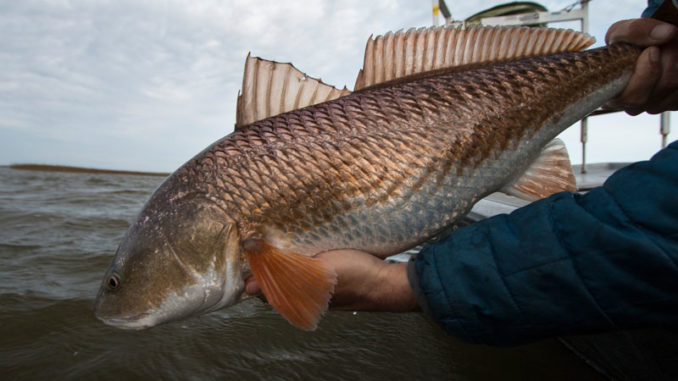
Louisiana sportsmen are once again left waiting to know the final outcome of how the state will manage one of the state’s most valuable outdoor assets.
The Louisiana Wildlife and Fisheries Commission amended a recent Notice of Intent (NOI) dealing with redfish (red drum) limits after a Legislative Oversight Committee kicked back the original NOI.
Commissioners amended the NOI at their regular monthly meeting on Dec. 7. The original NOI was deemed unacceptable by the House Committee in a 8-2 vote. The Senate Committee did not provide a motion in the ongoing saga.
Amended NOI
The amended NOI calls for an 18 to 27 inch slot, the same as the original NOI, and a reduction of the bag limit from four to three fish which, according to Louisiana Department of Wildlife and Fisheries biologists, would garner a 42.4 percent reduction in harvest. That would enable the red drum species to stabilize in approximately 17 years.
According to commissioners, the Legislative Oversight Committee members indicated the 18-27 inch slot, four-fish bag and no guide limits was “acceptable.” During the Nov. 7 oversight hearing, only a small number of people were heard from. Thirty two people testified in favor of the NOI, while nine testified against it. In total at the hearing, 40 were in favor, and 15 total people were against it.
LDWF Assistant Secretary/Fisheries Patrick Banks, in his presentation to commissioners, carried the blame for the previous NOI’s light guidance and urged the group to “practice conservation.”
“I’m going to urge the Commission to practice conservation like you did before,” Banks said at the December meeting. “If the legislature chooses not to practice conservation, which is what they did that day, so be it. You all did a tremendous thing when you passed a very strong conservation measure a few months ago. Y’all had to carry the yoke of our subpar recommendation around your necks, and that’s my fault. We supplied you all with a minimum recommendation that day.”
Do what is best
Several audience members spoke in favor of the amended NOI. One such audience member, Jeff Arnold, urged commissioners to “do what is best for redfish.”
The Oakdale fishing guide said, “It is mind blowing to see the economic impact we have on the community. Redfish are simply too valuable to squander. Please don’t miss this chance to put redfish on the path to recovery. We have to do what is right for the redfish for the state of Louisiana.”
Glen Comeaux, conservation director for Fly Fishers International, spoke in favor of the new NOI.
“The community of fly fishers and kayak fishing would never support a 29-year SPR (spawning potential ratio) recovery,” he said. “We supported the NOI that was passed back in July, and we heard a lot of feedback that the slot was very restrictive. We need to do something for our resource. Twenty-nine years is unacceptable. Twenty years is unacceptable. I like this compromise though. The three-fish limit will not hurt anybody.”
A one-time public comment hearing will be held on Jan. 22, 2024 at 10 a.m. in the LWFC meeting room. The rule would then be subject to another 30-day Legislative Oversight period and would still take at least until the March 2024 Register for publication.
Menhaden accounting
In response to proposed tighter regulations on the controversial menhaden industry close to shore in Louisiana, a report on the economic impact of those changes, financed by the menhaden industry itself, was presented to the commission.
The report suggests that possibly 15 percent of the menhaden harvest may be affected in changing the buffer zone to one mile. Louisiana has by far the most liberal and loose restrictions on the pogie industry of any Gulf state. Changes have been attempted for years in response to wreckless operations of pogie boats in the shallow coastal areas and unmitigated secondary loss of sports fish, like struggling redfish populations.
Dr. Jack Isaacs, an economist and long-time employee of the LDWF, gave his opinion to Commission members from the report prepared by Thomas J. Murray Associates, Inc., which was financed by the menhaden industry.
Isaacs called the study’s data, “good.”
“Usually when I see a survey done by a stakeholder I take it with a grain of salt,” Isaacs said. “I’m actually going to give them a little more credit.”
Isaacs said the industry-sponsored report suggested that the direct economic impacts of commercial menhaden reduction fishery was $259.5 million in Louisiana in 2019. There were 649 million pounds of menhaden brought to the dockside with a value of $79 million to $83 million. Menhaden vessels numbered 23 vessels, containing a crew of approximately 15. The harvest season is April until November.
According to the report, 15 percent of the menhaden harvest was likely to be affected from the proposed changes and it alleges up to 90 jobs could be affected.


